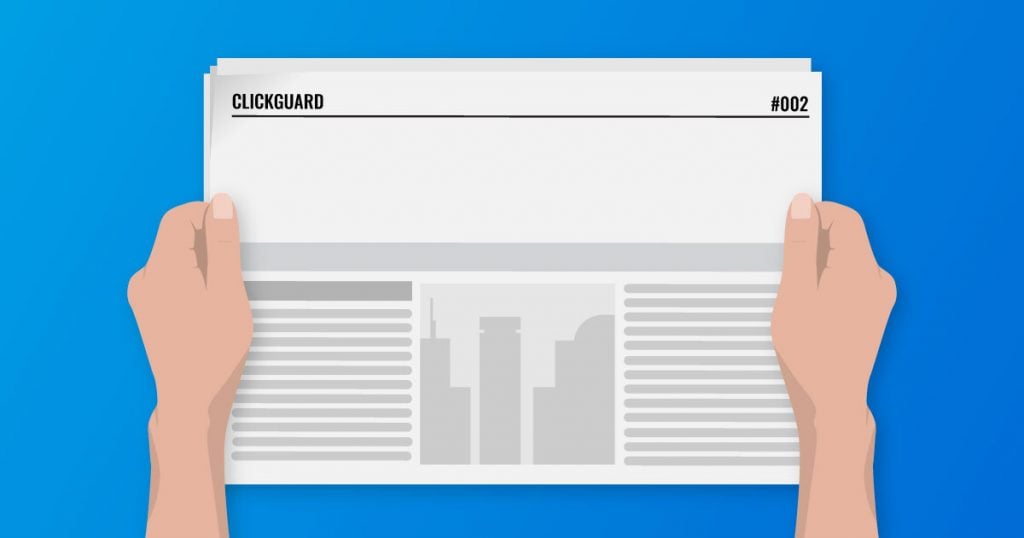Running a successful Google Ads campaign isn’t easy. I know that and you can read all about the mistakes I made in my other article – “3 Must-know mistakes I made as a Google Ads Consultant”.
In this article, we will show you some tricks ‘n treats on how to convert more with the Best Google Ads Copy.
Google Ads is the world’s largest ad network that holds 90% of the market share in the world. When you run an ad campaign on Google Ads, you are competing with thousands (if not hundreds) of other advertisers from all parts of the world. The competition is fierce, indeed. Therefore, your Google Ads Copy has to be PERFECT!

When done right, Google Ads provides you with an exceptionally high ROI (much more than other ad networks). You can expect a $2 return on every $1 invested in Google Ads. In a realistic world, achieving such a high ROI needs a lot of hard work, trial and error, and consistency. You can’t expect results right away from Google Ads no matter what you are told.
One of the most important elements of an ad is its copy. It defines the fate of your ad. Writing effective Google Ads copy makes your ad stand out from the crowd, it gets noticed and clicked. Google ads copy drives CTR, so it has to be well-written.
The big question: How to do it?
How can you write compelling and the best Google ads copy that will boost CTR?
You don’t have to reinvent the wheel, looking at the top-performing ad copies can give an idea of what works and what doesn’t. Here is a list of the best Google Ads Copy (with examples) that have exceptionally great ad copy so you can replicate, innovate, and evolve.
1. Use Power Words
Using power words in ad copy is the best way to boost CTR. Power words are used to trigger an emotional response in readers and they’re so powerful that ignoring them is exceptionally hard. One of the best power words for Google ads copy is ‘free’.
For example, here is a Google ad example from HubSpot, using the “Free” word in their ad.

If you look carefully, this Google ad usesseveral power words including:
- Your
- Now
- Get
- Best
- Forever
- 100%
Not convinced?
Here are two other ads from Britix, using the same “magic” word (“free”):
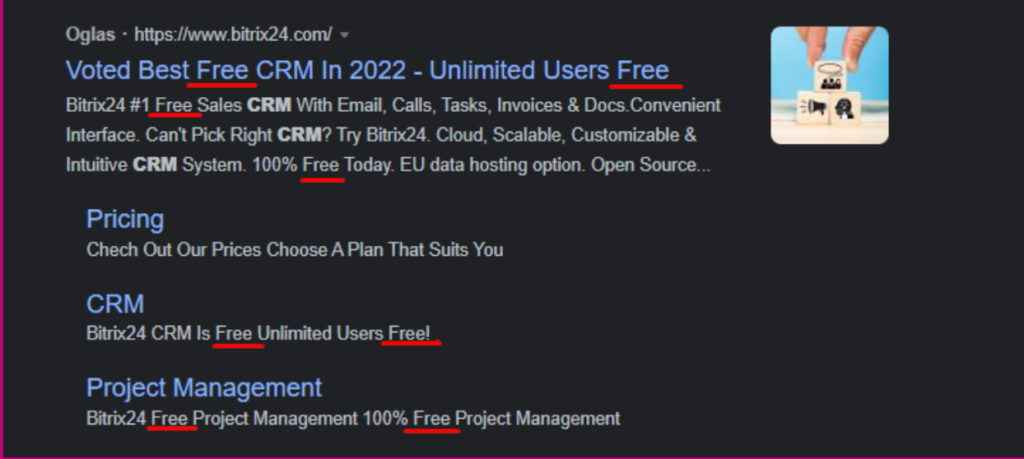

Using these words in the ad copy makes it appealing and emotional. These words trigger the emotions of the readers encouraging them to click the ad.
When you use power words like “free” in your ad copy, you need to make sure that you are offering something actually free to the visitors. Don’t add free to boost CTR, only do it when your product is TRULY free.
2. Highlight Benefits
Highlighting the major benefits of your product that your competitors don’t offer makes your ad copy irresistible. Here is an example by Mailerjet:

This ad copy highlights numerous benefits that a potential buyer will get after signing up with their email marketing tool. Simply listing features isn’t a great idea and it doesn’t work because your audience isn’t interested in features. It is interested in how a feature can benefit it.
Listing product features in your Google Ads copy is a bad idea, convert features into benefits and tell your audience how each feature will benefit it. Here is an example of how to do it:
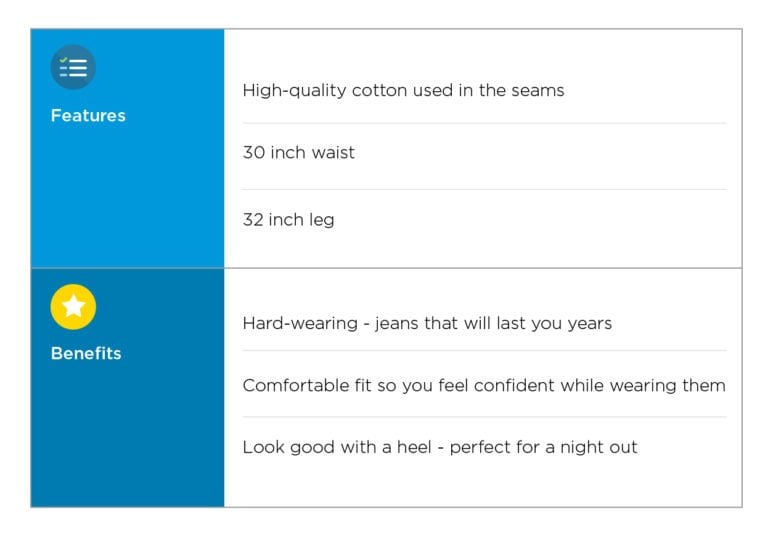
The Mailerjet Google ad example has highlighted benefits. It doesn’t say that it has an email builder, rather it tells how users can benefit from its email builder (by creating beautiful emails with ease).
Here’s another example (this time, from Canva), highlighting both the benefits and the user pain point. In this case, the pain point is the fact that online design can be quite complicated – and Canva advertises that the benefit of using their tool will help you make online design easier.
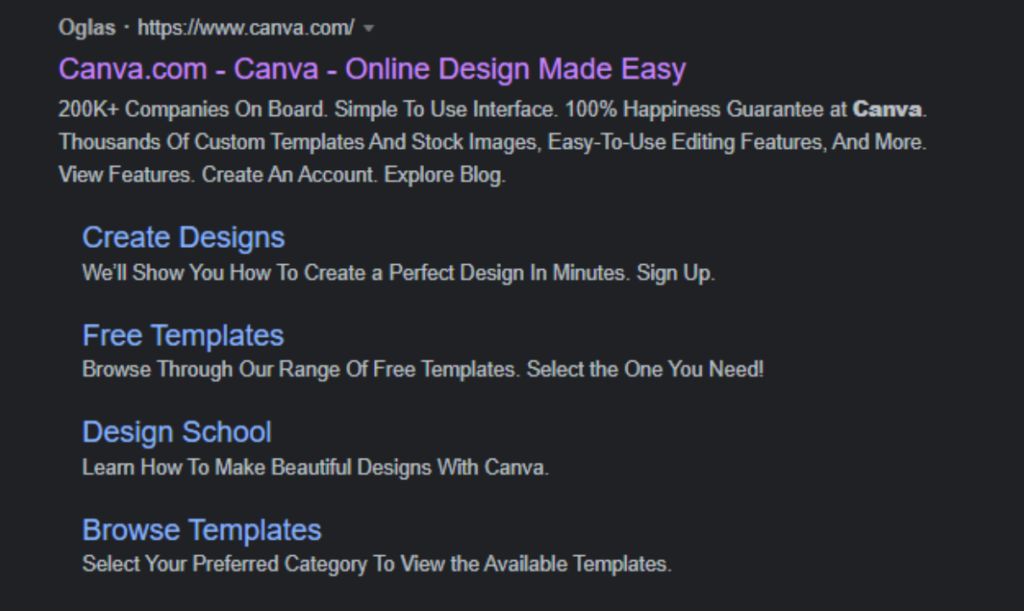
Here’s another example from SendInBlue of how you can combine highlighting features but also highlighting benefits (where the feature is the free trial, and the benefit is “sending up to 300 emails/day”.
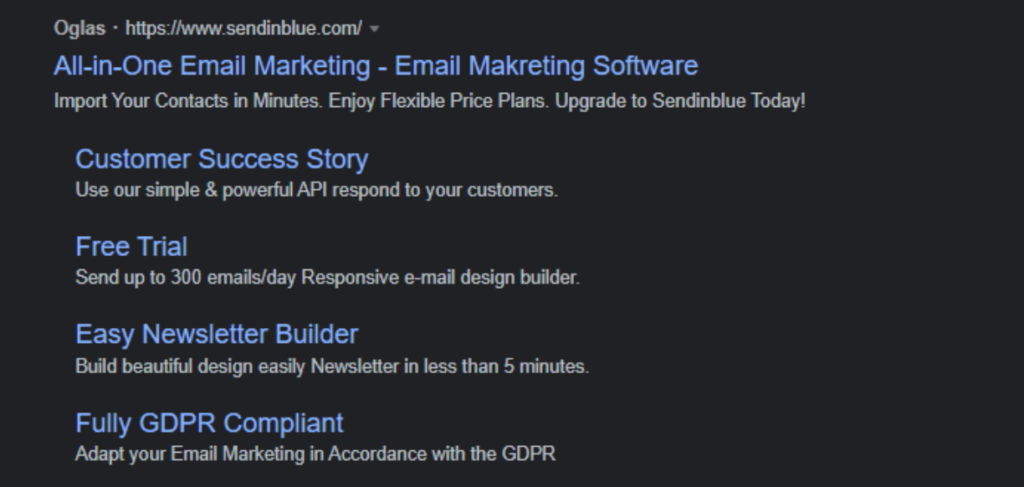
When you highlight the benefits of your product/service, it gives a clear indication to your ideal customers what they’ll get if they’ll get from your product. In other words, you need to tell your ideal customers how your product will solve their problem. This is what boosts CTR.
3. Include a Clear Call to Action
Call to action is the most essential element in your Google Ads copy. It drives clicks and boosts CTR. Not having a clear and attention-grabbing CTA in your Google Ads copy is the last thing you have to do.
Here is the best Google ad copy with a clear CTA:

Sometimes, you can pull off multiple clear CTAs as well. For instance, take a look at this ad from ClickUp, where they manage to use multiple CTAs (and make them all very clear):

Here is the thing: You shouldn’t assume that people who see your ad in SERPs know what they have to do. You need to tell them what they’re supposed to do to grab your offer. This is why CTAs are important as they tell people what action they have to take to move to the next step.
An attention-grabbing CTA catches eyes and persuades ad viewers to click. There are several words that you can use to make your CTA persuasive such as:
- Get
- Buy
- Shop
- Order
- Try
- Sign up
- Learn
- Click
- Discover
- Register
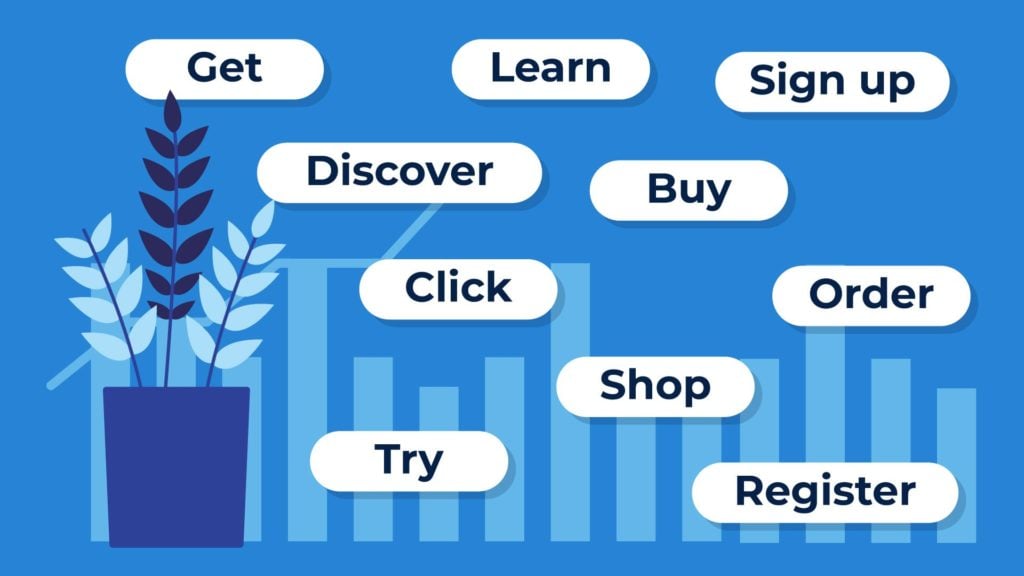
These words do two things. First, they guide your ideal customers what action they have to take. Second, these words persuade potential buyers to click your ad.
Imagine a Google Ads copy without any CTA. The probability of clicking the ad will decrease significantly. Here are two Google Ads examples where the lack of CTA makes them less efficient:


Will you click any of these ads?
Probably not.
Why?
Because it has no CTA. Even if you like the ad copy, you’ll read it and pass, because it doesn’t “urge” you to do anything. This is the reason why CTA is such an essential part of the ad copy.
4. Use Social Proof
Using social proof in Google ads copy is a guaranteed way to increase CTR. It works because 83% of consumers trust user reviews as much as personal recommendations. When people see others doing something – they follow to avoid missing (also known as FOMO).
The best way to use social proof in Google Ads copy is by sharing reviews. Here is an example by Hilton:

The star rating is prominent and catches eyes instantly. Importantly, these 394 people can’t be wrong.
Here’s another example, from he same industry, on how to use social proof if you can’t include actual ratings in your copy (in the case of Booking.com, that happens because they showcase thousands of hotels and accommodation options, and each of them comes with its own rating).

When your ideal customers see ratings and reviews, it triggers them psychologically persuading them to take action. Social proof drives CTR, improves business reputation, and increases customer trust.
5. Use Numbers in Headline
Numbers never lie. And everyone knows that!
So make sure to include the numbers such as statistics, data, ratings, etc. in your ad copy but also in the headline, in order to your brand’s trustworthiness. Chances are that your campaign will convert much better this way.
It makes sense, actually: the human brain is attracted to numbers because we arrange information logically in our brains and this is the reason why numbers or digits are perceived differently than text.
And yes, numbers have their own psychology just like colors.
Using a number in Google Ads copy can catch eyeballs and boost CTR significantly. Here is a perfect Google Ads copy example:
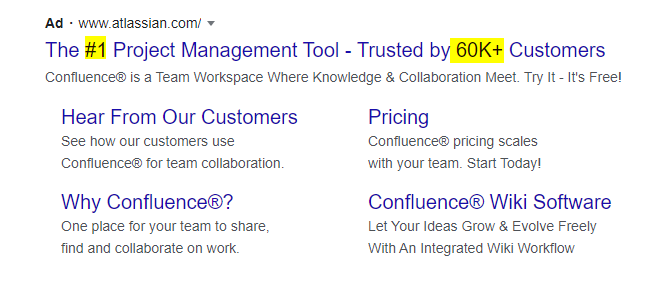
Atlassian is using not just one but two numbers in its headline to make it appealing. If you want your Google ad copy to get lots of clicks and attention, use a number in the headline or somewhere in the description. You can use price, customer count, products left, inventory count, discount, percentage sale, or anything that is valuable for your ideal customers.
Here’s another example on how numbers can be incorporated into your ad headline:

Don’t use a number just for the sake of using a number – it should make sense. The idea behind using a number in ad copy is that it must emphasize the value your product delivers to the consumers, not to dangle numbers because all the “best practices” say you should.
More Tips on How to Nail Google Ads Copy
Want to be even better at spotting the best Google Ads examples and writing your own successful ads?
Here are two essential tips to keep in mind:
1. Use Google Ads Tools
Google Ads provides you with multiple tools to help you write the best copy, like Test Variation Tool or Google Ad Modifiers.
Google Ad Modifiers will allow you to browse and insert the keywords that are normally entered in the search query by the user. It’s always recommended that you do a bit of keyword research and include some keywords connected to your product.
Furthermore, the Google Ads Test Variation Tool can help you nail down the best Google Ads copy.
Here’s how to find the Test Variation Tool:
- Log in into your Google Ads account
- Go to All Campaigns
- Scroll down to “Drafts & Experiments”
- Click on Ad Variations
In essence, this tool will allow you to do A/B testing and see which version of your Google Ads copy converts the best:
Some of the elements you can test include the following:
- Change URLs
- Change Descriptions
- Choose parts of ads you want to change
- Set bunch of new filters
2. Spy Your Competitors
There’s nothing wrong with having a sneak peek into what your competitors are doing in order to get some ideas!
Of course, make sure you’re not plagiarizing — always include your creative side and build something unique that mirrors your brand.
If you want to take your competitor “spying” up a notch, you can use SEM Rush’s tool “Ads History” to get amazing insight into what your competitors were running, and how successful they are with it.
Conclusion
The Google ad copy is a promise (A pinky one). This promise must be fulfilled. If your ad says a 50% discount, the landing page must offer a 50% discount. A mismatch between Google ad copy and landing page will ruin conversions. And this isn’t what you want.
Reducing the conversion rate in an effort to increase ad CTR is a lethal mistake. While you optimize your Google ad copy for CTR, don’t ignore the conversion rate.
Either way, your copy is your weapon for getting people to click on your ad, therefore:
- Use CTA as often as you can
- Don’t forget to include power words
- Show of with REAL numbers
- Highlight the benefits of your product instead of its features
- Include REAL social proof if you have it
- And optimize your copy with Google Ads tools
What are the best Google Ads examples you’ve seen so far? How about your own ads, what’s the best ad you’ve ever run? How did it perform?

